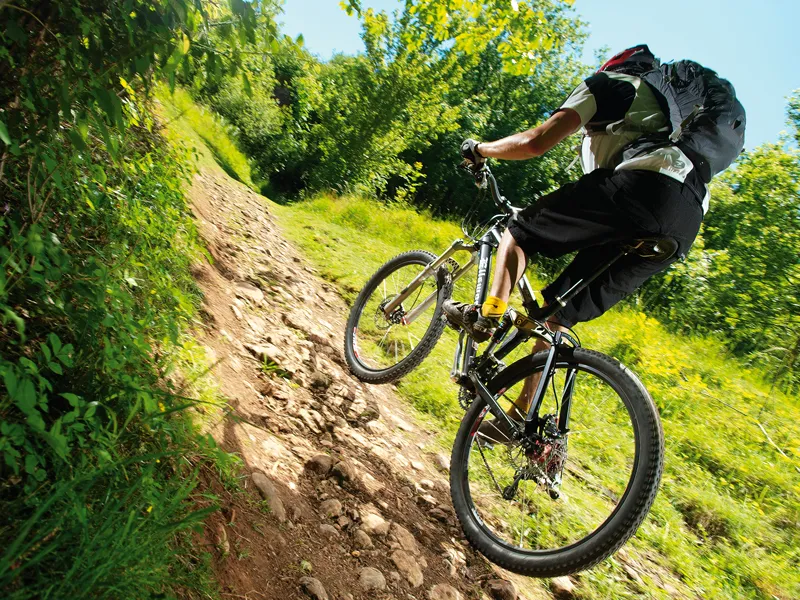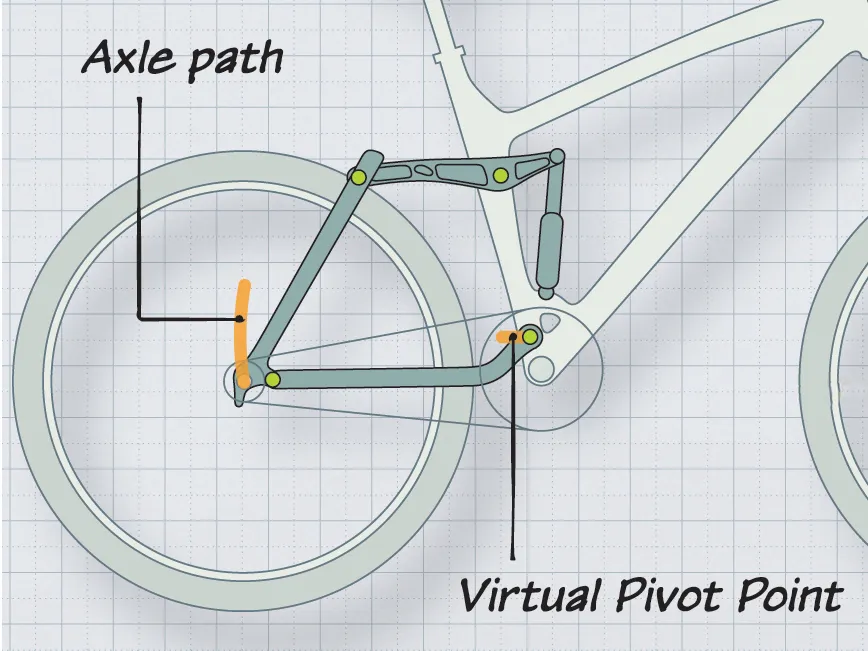With a host of terms like four bar, faux bar, virtual pivot, multi link and floating drivetrain to describe different full-suspension frame designs, as well as a raft of manufacturer acronyms to contend with, it's no wonder that many of the biking public are left bemused.
But it’s not really surprising because suspension design is a very complicated arena. Over the course of this three-part buyer's guide we’ll do our best to demystify this murky world with the truth, the whole truth and nothing but the truth.
Suspension theory
Given that most manufacturers claim to achieve the same end result with their full-sus rigs, using baffling phrases to describe their setups such as ‘100 percent neutral’ and ‘fully active’, are there any real differences when you get out on the trail? The simple answer is yes, and what the manufacturers claim is not always true.
It's important to bear in mind that suspension layout isn't simply about bike designers designing around any one factor, because the bike’s geometry, stiffness, weight, instantaneous lever ratio, anti-squat/chain pull effect and shock tuning all have to be considered and designed for as a whole. All these factors work together to bestow the bike the ride it has: there is no one magic ingredient.
Pivot location
The two most common suspension frame designs on the market, with variations, are the single pivot and the four bar linkage. The first is as simple as it gets: the rear wheel is fixed on a cantilever, or swingarm, with a pivot on the front triangle and the shock in between.
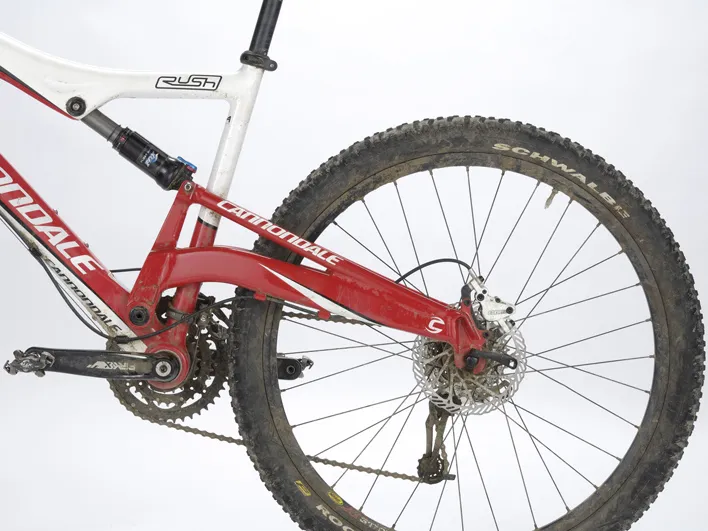
This Cannondale Rush has a simple single pivot suspension designThe four bar uses an extra pivot on the chainstay and further linkages to complete the four bars. This creates a virtual or floating pivot point: the geometry of these linkages dictate the precise location of this point, and a point called the instant centre of rotation, which we'll discuss later on.
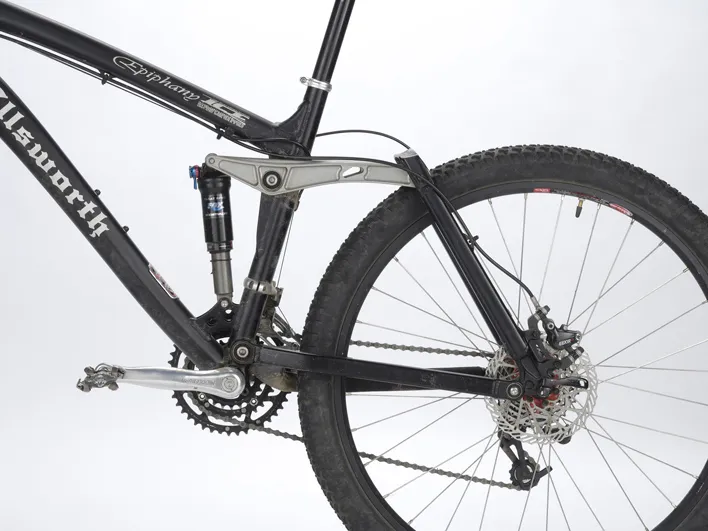
This Ellsworth Epiphany has a more complicated four bar system with a chainstay pivotThe most well known four bar is the Horst Link, the patent for which is owned by Specialized. We'll cover these suspension designs, and the four other most common systems, in more depth in part two of this guide.
One of the most common misconceptions about suspension is that four bar and other multi-pivot setups will pedal more efficiently than a single pivot, somehow decoupling the suspension from the drivetrain.
This isn't always true; in fact, at times when the floating pivot point of a particular design is located in the same place as that on a single pivot bike, they will behave exactly the same when pedalling and accelerating. The location of this pivot is the key, because it dictates the path of the rear axle and how the suspension will react at any given moment in time.
Certain floating pivot point configurations can place the floating pivot in physically impossible locations, such as within the wheel or several metres in front of the bike. Furthermore, the floating pivot can move as the suspension compresses, allowing the designer more freedom when constructing axle paths or other characteristics.
So where is the best place to put that pivot? That depends on what the designer wants from his setup. The position directly affects the path the rear axle takes; for example, a rearward path can be more sensitive to bumps than a vertical path, but can also introduce some positive and negative effects.
Pedal kickback occurs when the rear axle moves further away from the bottom bracket. The top run of chain wants to get longer (chain growth) so something has to give: the tension pulls at the cranks as if trying to turn them backwards.
You can feel this through the pedals and it is magnified in certain gear combinations. For many people this is an undesirable effect and the simple solution would be to put the pivot very close to the bottom bracket. This does reduce the chain growth, but introduces another factor: pedal bob.
Uncle Bob and Anti Squat
An old fellow named Newton once said “every action has an equal and opposite reaction” and this is true when we press on the pedals and accelerate: the bike moves forward and our weight moves further towards the back of the bike. This constant stop-start effect and weight shifting can compress and extend the shock rhythmically, which we call pedal bob.
There are two solutions to this. One is to introduce compression damping or platform damping/lockouts in the shock to resist the compression; the other is to locate the pivot in such a way that the chain tension and drive forces when pedalling want to extend the suspension.
This balances the tendency for the shock to compress as we pedal and is called anti-squat. 100 percent anti-squat is perfect balance of the forces. Squat itself is how the rear end sinks under acceleration as you pedal. Both methods can be effective, but not without problems.
Extra shock damping and platforms can stifle the suspension performance over smaller bumps, while high levels of anti-squat bring back our friend pedal kickback, due to the pivot position required. Most designers have to trade off pedal kickback and bob with their pivot locations and resulting axle paths.
If four bar machines behave the same as single pivots when pedalling then, all else being equal, it would seem to make sense to go for the less complicated single pivot design. However, having the shock driven by a linkage, as in a four bar setup, allows the designer to tune how the shock is compressed through the stroke and resulting suspension rate.
This gives more flexibility to the design. Some single pivots have linkages added for this same reason – think Commencal Meta or Kona Dawg – to give a rocker-activated single pivot, also known as a faux bar or complex single pivot.
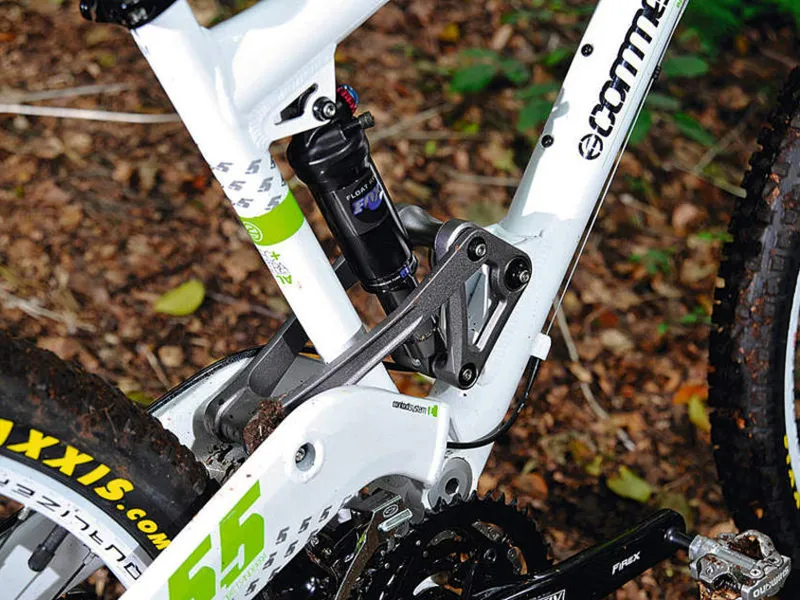
Commencal's Meta series bikes use a rocker activated single pivot designThey're still technically single pivots because the wheel can only arc around the main pivot – if you look closely at most Konas you'll see the pivot on the seatstay, not chainstay. Four bar and single pivot machines can behave very differently to each other under braking, though.
Instant centre
Every part of the floating fourth bar of a four bar system has a unique virtual pivot point, but shares a common second point called the instant centre of rotation, or IC. The IC can be used to calculate the levels of anti-squat and how the system reacts under braking, as well as the actual floating pivot location and axle path.
It's simple to calculate: draw a line through the upper linkage pivots, draw a second line through the lower linkage pivots, and where these intersect is the IC. It varies as the suspension compresses.
It can be said that all parts of the fourth bar are travelling at 90 degrees to a line drawn from it to the IC, or revolving about it for that instant. The actual floating pivot point will lie on this line too, and calculating the many IC points as the suspension compresses allows the floating pivot point to be found.

Braking effectsWhen we brake, the forces try to rotate the tyre contact patch around the IC, its position determining how braking forces influence the suspension. Certain positions can compress the suspension (brake squat) or extend it (brake jack).
Braking causes our weight to move forward, extending the shock. So, squat can be useful to maintain even geometry to counterbalance this effect, but it can also make the suspension feel harsh and lose traction, while a net extension may upset the geometry but increases the available traction.
The designer can place the IC in such a way as to give a desirable balance of forces. If you take two designs, they may both have the same virtual pivot point for the rear axle, and the same axle path, but different ICs.
The designer can tune how the suspension behaves under braking independently from how it behaves under acceleration with a four bar. This is not possible with a single pivot bike, as the IC is always where the main pivot is, but a four bar allows the designer further flexibility, and was the original reason the Horst Link was created.
Design variations
There are many rear suspension designs, and they all have slightly different traits. We'll cover the six most common frame layouts in part two of this guide.
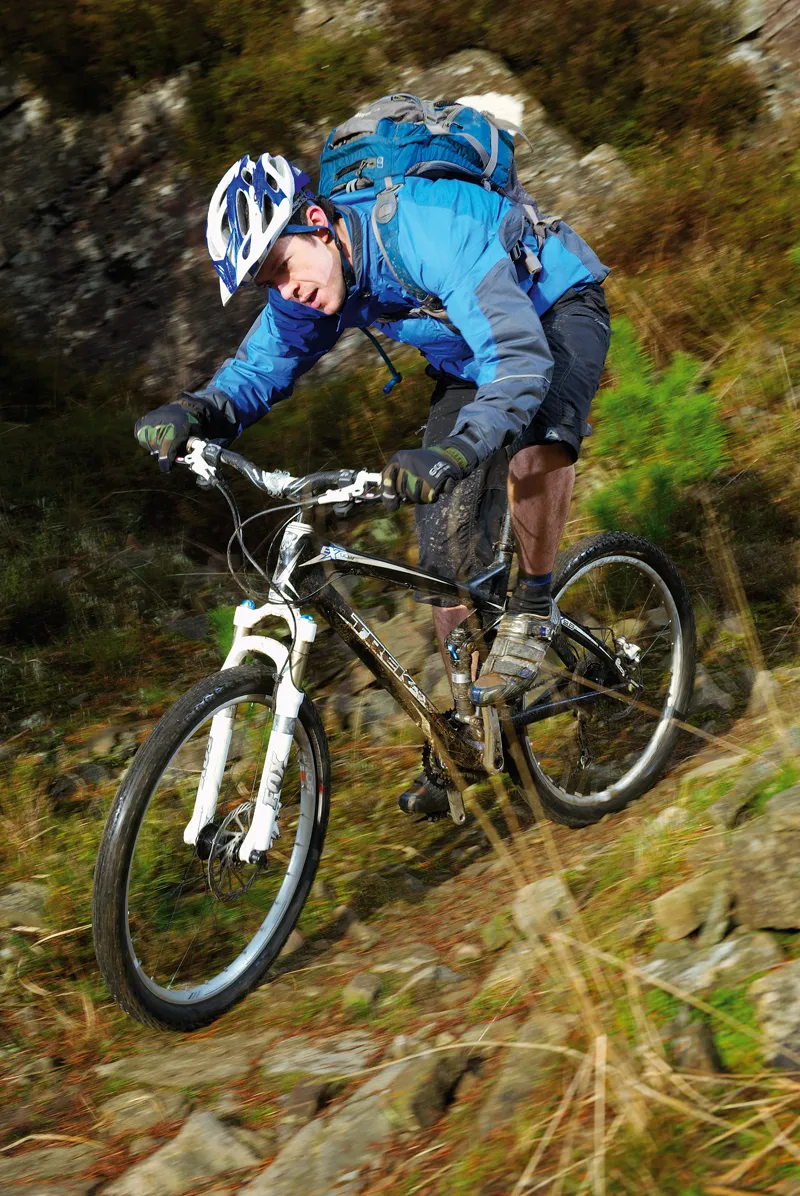
There are many suspension types out there and each has its pros and cons, yet the rider is still the most important factor
Jargon buster
- Axle path: This is the virtual course that the rear axle, and hence wheel, moves along as the suspension is compressed (ie. when it hits an obstacle ). There are certain handling characteristics that are defined by the axle path.
- Brake jack: Brake jack is extension of the rear suspension. It can improve tracking of the wheel, but upsets geometry due to the rear extending and the front compressing, causing the fork to feel harsh.
- Brake squat: Brake squat is compression of the rear suspension under braking. This can cause the suspension to feel harsher, but can actually balance the geometry of the bike as both ends compress together. Most bikes tend to squat to some degree.
- Chain growth: Compressing the suspension usually causes the wheel to initially move away from the bottom bracket, causing the chain to lengthen (chain growth) which is taken up by the rear mech’s spring.
- Instant centre (IC): The instant centre of rotation, or IC, is a virtual point in space: for a split moment in time it can be said that all other points are revolving around the IC for that instant. The IC migrates as the bike moves through its travel, and will be at a different spot at different points in the travel.
- Falling rate suspension: See 'Suspension rates'.
- Leverage ratio: This is the ratio of wheel travel to the shock compression. A 2:1 ratio with 4in wheel travel at the axle gives 2in of shock shaft travel. With many designs the figures vary through the travel. Values between 2:1 and 3:1 are used currently. Higher leverage ratios equal higher stress on the shock and less sensitivity to small bumps.
- Linear suspension: See 'Suspension rates'.
- Pedal bob: Bob is the feeling of bobbing the rider experiences due to the pedalling/drivetrain influence on the rear suspension, and how our mass reacts when we accelerate. It’s exacerbated by a choppy pedalling style and dynamic rider weight shifts. Certain pivot locations use the chain tension and drive forces to counteract the tendency to bob.
- Pedal kickback: With too much chain growth, if you hit a bump while pedalling the pedals want to kick back. When this force is opposed by you pedalling, it acts to stiffen your suspension. Most designs behave like this to some extent, however certain setups may actually compress the suspension further. This happens when the axle path gets closer to the bottom bracket, and can be seen on some floating pivot designs, such as the beginning part of the Santa Cruz VPP and at the latter stages of vertical axle paths. It's called pro squat.
- Platform shocks: Platform shocks are the saviours of certain single pivot and floating pivot designs that have a natural tendency to bob, ie. those with pivots near to the bottom bracket. These shocks use slow-speed built-in compression damping to overcome the very active nature of these designs. They work at the expense of some small-bump sensitivity. Other shocks can be fully locked out so they don’t move at all (for steady climbing), while some platform shocks – such as the Fox RP23 – have three-stage platform settings (light, medium and full) so you can tailor their feel to suit.
- Progressive suspension: See 'Suspension rates'.
- Sag: The suspension travel caused by the weight of the rider sitting on the bike when it is stationary. You usually set this to 20-30 percent of the available travel.
- Squat: Squat refers to how the rear end of a suspension bike sinks under acceleration in response to rider pedalling.
- Suspension rates: There are three types of suspension rate: progressive (also known as rising rate), linear and, less commonly, falling rate. Progressive suspension stiffens up at the end of the shock travel; this is a typical cross-country bike setup. Falling rate suspension feels super-plush at the end and is much easier to blow through the travel (ie. bottom-out), while a linear setup feels the same throughout the travel.
